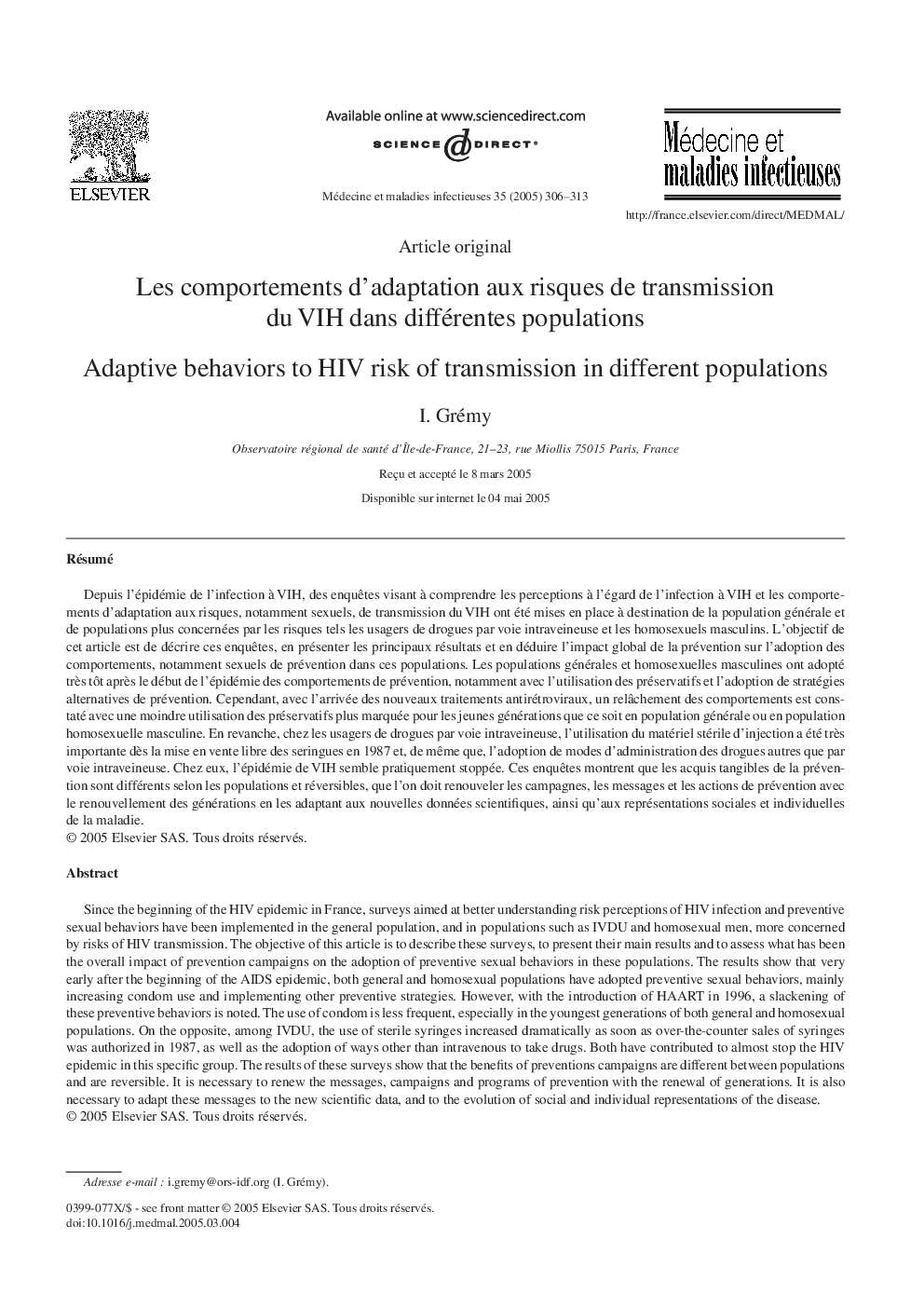| Article ID | Journal | Published Year | Pages | File Type |
|---|---|---|---|---|
| 9281944 | Médecine et Maladies Infectieuses | 2005 | 8 Pages |
Abstract
Since the beginning of the HIV epidemic in France, surveys aimed at better understanding risk perceptions of HIV infection and preventive sexual behaviors have been implemented in the general population, and in populations such as IVDU and homosexual men, more concerned by risks of HIV transmission. The objective of this article is to describe these surveys, to present their main results and to assess what has been the overall impact of prevention campaigns on the adoption of preventive sexual behaviors in these populations. The results show that very early after the beginning of the AIDS epidemic, both general and homosexual populations have adopted preventive sexual behaviors, mainly increasing condom use and implementing other preventive strategies. However, with the introduction of HAART in 1996, a slackening of these preventive behaviors is noted. The use of condom is less frequent, especially in the youngest generations of both general and homosexual populations. On the opposite, among IVDU, the use of sterile syringes increased dramatically as soon as over-the-counter sales of syringes was authorized in 1987, as well as the adoption of ways other than intravenous to take drugs. Both have contributed to almost stop the HIV epidemic in this specific group. The results of these surveys show that the benefits of preventions campaigns are different between populations and are reversible. It is necessary to renew the messages, campaigns and programs of prevention with the renewal of generations. It is also necessary to adapt these messages to the new scientific data, and to the evolution of social and individual representations of the disease.
Related Topics
Health Sciences
Medicine and Dentistry
Infectious Diseases
Authors
I. Grémy,
